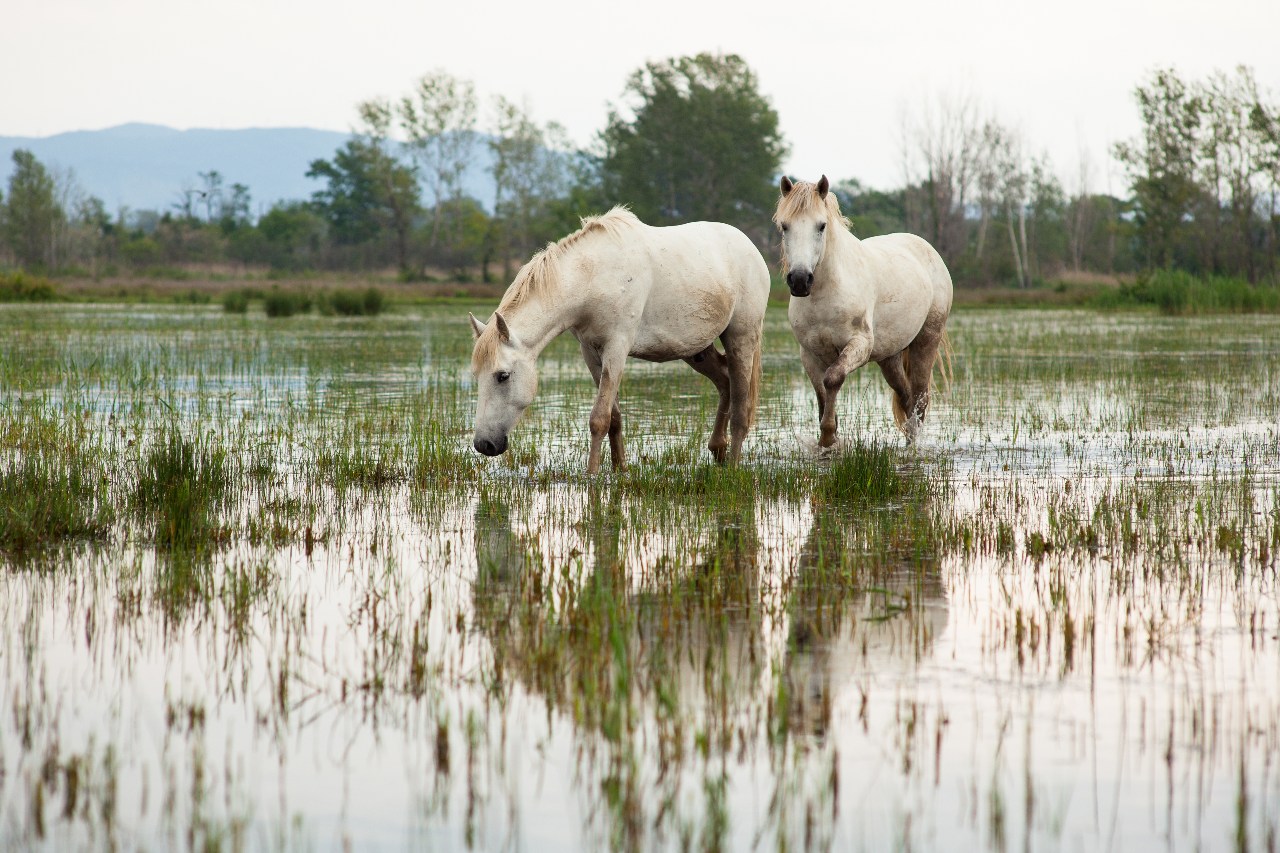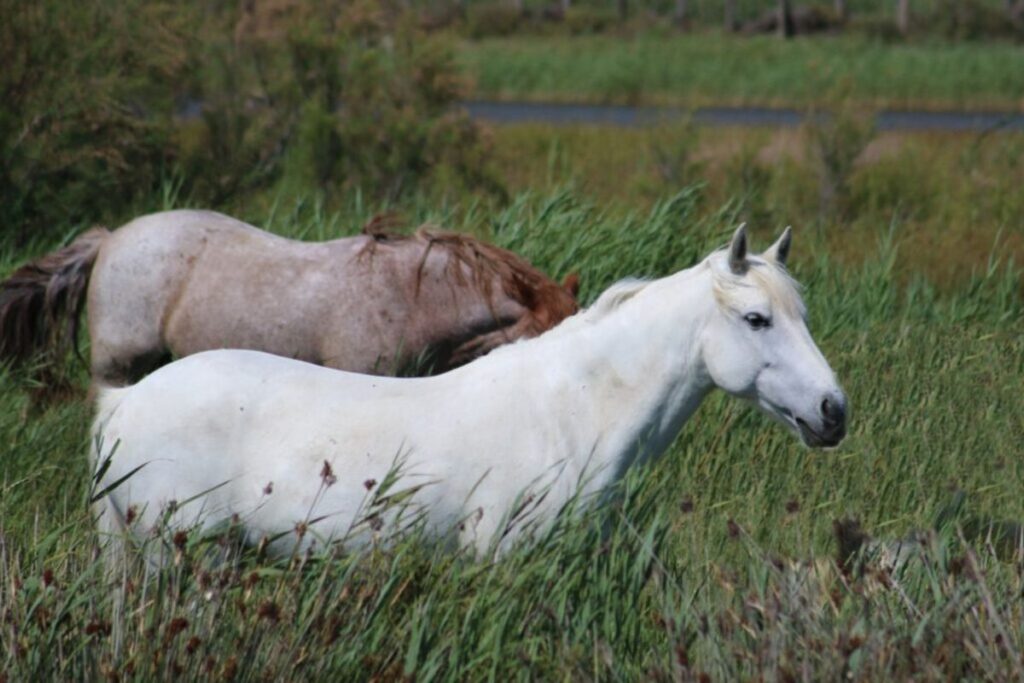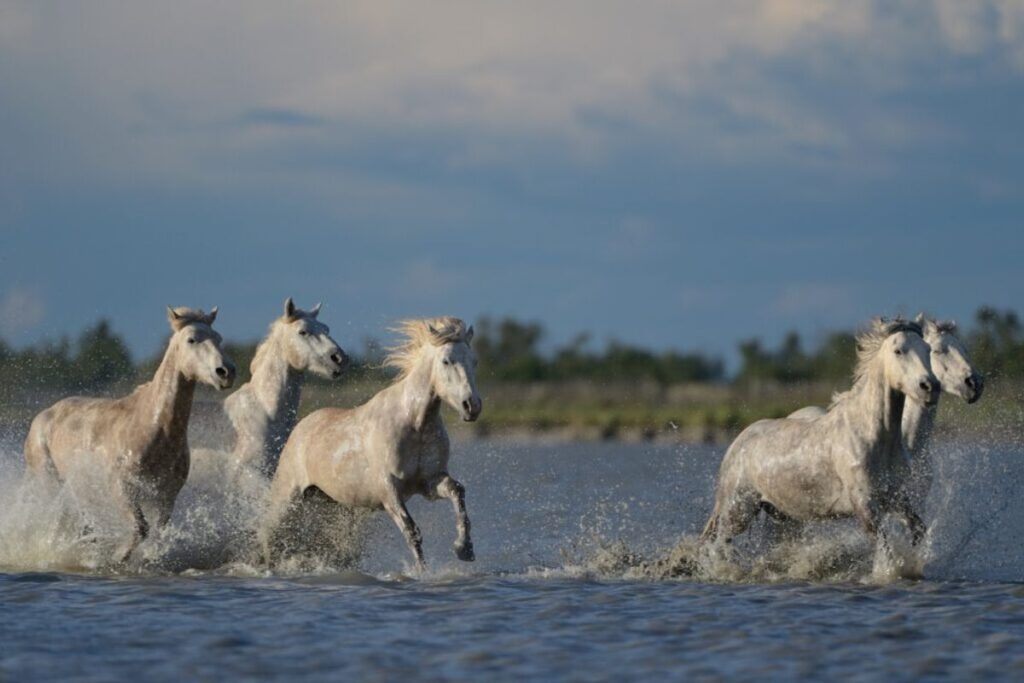Menu

In the Rhone Delta in the south of France lives the ancient breed Camargue. A breed which is believed to be descended from prehistoric horses. Due to the isolated geographical area where the horses live, the breed has not been influenced by other breeds for centuries. Here you can meet the Camargue horse, which runs (almost) free in the swampy wetlands in Southern France.
You may also like to read: Horse breed: Welsh pony and cob – small body, big personality
The Camargue horse has in its time been under the influence of the Berber, which came from North Africa in connection with the Moorish invasion. Since then the breed has not been influenced by any other breeds. This is because the Rhone Delta, where they live, is totally isolated from the outside world. The horses live in semi-wild herds in the wetlands. Here they have a somewhat harsh existence because they are constantly searching for food. The horses feed on reed vegetation, coarse grass, and only in very rare cases the horses are given some supplementary feed.
The Camargue horse is the favorite horse of the so-called Les Gardians, as the local cowboys are called. They use them in the work of guarding the wild, black bulls used in local bullfights. In addition, the horses are used as pack horses as well as to bring tourists out into the wetlands. Although the breed has a very long history, it was not really recognized until 1968. This is when an organization for the breed was formed. Since the organization came into force, there has been a systematic supervision of the stallions.
"When there is only limited food, camargue horses can grass for up to 22 hours a day"

Camargue horses live in small herds consisting of a stallion, his mares and offspring. In the Rhone-delta area grows only reeds and coarse grass. This has contributed to the horses' incredible toughness. In addition, life in the swamps and along the sandy beaches of the Mediterranean has made it necessary for Camargue horses to develop strong hooves that resist moisture. Their behavior is regulated by the amount of food available. When food is scarce, Camargue horses can graze for up to 22 hours a day. If, on the other hand, there is plenty, they only graze at dawn and dusk.
With a large and heavy head, which sits on a short and powerful neck, one clearly sees the Berber's influence on the breed. The horse has a steep shoulder. This in part means that it has a trotting movement that is so high that it is not very useful when riding the horse. On the other hand, a Camargue horse has both a smooth and free step and gallop, which is energetic.

The horse is agile and athletic with a good temperament, and then it is by nature very brave. A Camargue horse grows slowly and is only fully developed when it is five to six years or more. It is completely dark at birth, but gradually becomes lighter and lighter until it attains its characteristic white color. It grows up to 140 cm in bar size, and it is branded with a C in a shield.
It was not until 1976 that the French government set standards for the breed. And in 1978 the Camargue horse was internationally recognized as a breed. Today, they are a strictly protected breed. They are bred under strict standards and rules to keep the old breed as clean as possible. The Camargue horses can be described as semi-wild. And the breeding is under the supervision of the biological research station in La Tour du Valat. In addition, the horses live sheltered in the Camargue National Park. Here researchers can observe their social interactions and lifestyle, which contributes to the understanding of the horse's behavior.